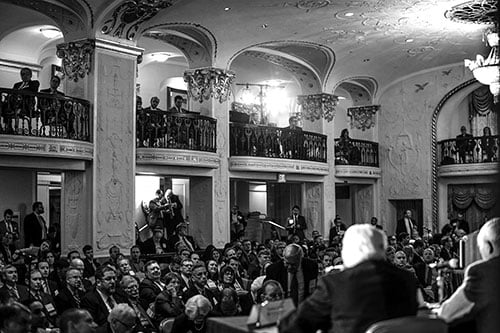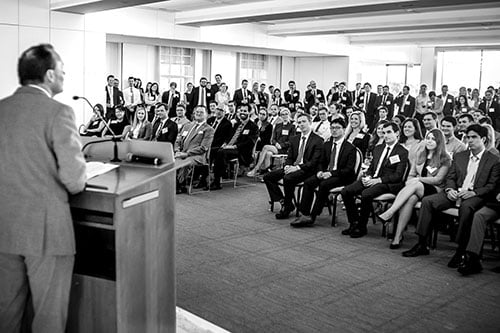Facts of the Case
This lawsuit arose out of Apple’s handling of the sale of apps for its iPhone devices. Apple released the iPhone in 2007, and from the outset, it has been a “closed system,” meaning that Apple controls which apps can be loaded onto an iPhone, which it does via the “App Store.” Although Apple develops some of the apps sold in the App Store, most are developed by third parties. For every App Store sale made by a third-party developer, Apple receives 30% of the sale price.
In 2011, four named plaintiffs filed a putative antitrust class action complaint against Apple, alleging monopolization and attempted monopolization of the iPhone app market. The complaint was dismissed on technical grounds, as were several subsequent attempts at similar lawsuits by both the same and other plaintiffs. In September 2013, a set of plaintiffs included in their allegations sufficient facts for the lawsuit to move forward. Among these facts was the key allegation that each plaintiff had purchased iPhone apps from the App Store, and that these transactions involved Apple collecting the entire purchase price and paying the developers after the sale.
Apple filed yet another motion to dismiss the lawsuit, contending that the plaintiffs lacked statutory standing to sue under the US Supreme Court’s precedent in Illinois Brick Co. v. Illinois, 431 U.S. 720 (1977). Under Illinois Brick, “only the overcharged direct purchaser, and not others in the chain of manufacture or distribution” may bring a lawsuit for antitrust violations. If the plaintiffs are considered to have purchased their iPhone apps directly from the app developers, then they cannot sue Apple. However, if they are considered to have bought the apps from Apple, then they may sue Apple.
The district court found that the plaintiffs lacked standing to sue under Illinois Brick and dismissed the case with prejudice. On appeal, the Ninth Circuit reviewed the district court’s decision de novo and found that, contrary to a ruling on the same issue by the US Court of Appeals for the Eighth Circuit, the plaintiffs are direct purchasers from Apple within the meaning of Illinois Brick and thus have standing.
Questions
May consumers sue for antitrust damages against anyone who delivers goods to them, even where they seek damages based on prices set by third parties who would be the immediate victims of the alleged offense?
Conclusions
-
Consumers who purchase goods or services at higher-than-competitive prices from an allegedly monopolistic retailer may sue the retailer under antitrust law. In a 5-4 opinion authored by Justice Brett Kavanaugh, the Court held that the plaintiff iPhone owners in this case, who purchased apps through Apple’s App Store, are direct purchasers under the Court’s precedential case Illinois Brick Co. v. Illinois, 431 U.S. 720 (1977), and thus may sue Apple.
Section 4 of the Clayton Act, 15 U.S.C. § 15(a), provides that “any person who shall be injured in his business or property by reason of anything forbidden in the antitrust laws may sue.” The Court has previously interpreted this provision to mean that “immediate buyers” from the alleged antitrust violators may sue the antitrust violators, but “indirect purchasers” (those who are two or more steps removed from the violator in a distribution chain) may not. The plaintiff iPhone owners in this case are not so distantly removed from Apple to foreclose a lawsuit; the Court found the absence of an intermediary between the consumers and Apple to be dispositive.
This interpretation is consistent not only with the statutory text and the Court’s precedent, but also the policy behind antitrust law. To hold otherwise would “provide a roadmap for monopolistic retailers” to evade antitrust law.
Justice Neil Gorsuch filed a dissenting opinion, in which Chief Justice John Roberts and Justices Clarence Thomas and Samuel Alito joined. The dissent argues that Illinois Brick broadly prohibits “pass on” theories of damages for antitrust violations, rather than the narrower reading based in contract embraced by the majority. As such, the dissent would find that the suit by the plaintiff consumers here is precisely the type of lawsuit proscribed in Illinois Brick.
Public Piracy of Private Property? Allen v. Cooper
Regulatory Transparency Project's Fourth Branch Video
The wreck of the Queen Anne’s Revenge, a ship captained by Blackbeard that sank in...
Courthouse Steps Decision Webinar: NCAA v. Alston
Corporations, Securities & Antitrust Practice Group Teleforum
TeleforumThe Antitrust Paradox: A Conversation with Sen. Mike Lee and Robert Bork, Jr.
Corporations, Securities & Antitrust Practice Group Teleforum
Teleforum(Un)Civil War: The Future of Conservative Antitrust
George Mason Student Chapter & Regulatory Transparency Project
Zoom Webinar -- George Mason3301 Fairfax Drive
Arlington, VA 22201
Antitrust Populism and the Conservative Movement
Pennsylvania Student Chapter
Zoom Webinar -- UPenn3501 Sansom Street
Philadelphia, PA 19102








